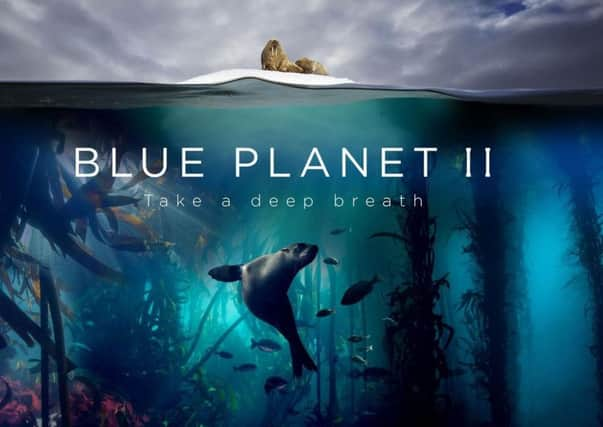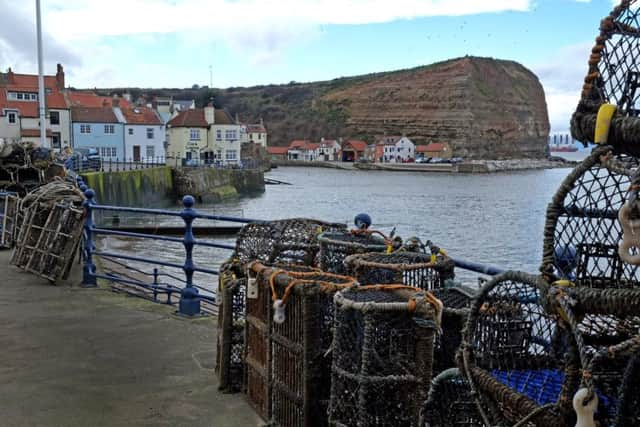Andrew Vine: How can we stop Yorkshire's beautiful coastline sinking under a tide of plastic?


All along the shoreline around Flamborough, seabirds searched for food amongst the waste of our throwaway society – bottles, packaging, shapeless lumps that might once have been household items – hurled ashore by rough seas.
My heart sank at the spectacle of the rubbish-strewn beaches of South Landing and Danes Dyke. It was as dismaying as anything in Sir David Attenborough’s Blue Planet II, with its wake-up call about the menace posed by plastic waste to the oceans.
Advertisement
Hide AdAdvertisement
Hide AdThese should be pristine places, not dumping grounds. But go anywhere along the Yorkshire coast, from Spurn in the south to Sandsend in the north, and it’s the same.


The big tourist centres of Scarborough, Whitby, Bridlington and Filey have to cope not only with the tide of rubbish from the sea, but that chucked away by irresponsible visitors.
And this is only what we can see on the sands and shingle. What lies hidden below the waves, causing untold harm to marine life, can only be guessed at.
Doing something about it is the hard bit. But reducing waste starts at home, and on returning from the coast, I took a long, hard look at the amount of disposable plastic in everyday use in my house.
Advertisement
Hide AdAdvertisement
Hide AdAnd once I added it all up, it’s staggering. Reach for virtually any foodstuff in the fridge or cupboards – if it’s pre-packaged – and there’s some plastic involved. Ditto toiletries and cleaning materials.


Maybe half of it is recyclable, and that goes conscientiously into the green bin. But the rest? How much of it eventually, after whatever tortuous journey it takes, ends up blowing about on a beach?
So I tried a weekly shop with the deliberate aim of avoiding plastic packaging. It’s all but impossible.
The usual supermarket run immediately presented problems, because almost everything is wrapped in plastic. Even the self-selection fruit and vegetables are taken to the checkout in a plastic bag, and tinned food often has an inner membrane.
Advertisement
Hide AdAdvertisement
Hide AdIndependent shops looked more promising. The local greengrocer and baker still use paper bags, but that’s it. Beyond buying fruit, vegetables and a loaf, plastic packaging in some form or another is unavoidable.
Butcher and fishmonger wrap in it, because it’s hygienic and convenient.
And what about the other mundane items on my shopping list? I don’t know where you buy toothpaste or washing-up liquid in anything other than plastic containers.
By making a conscious effort, I managed to cut down the amount of plastic packaging coming into the house – and ultimately out into the bins – but only slightly, and at the expense of a lot more time and effort than usual to do the shopping.
Advertisement
Hide AdAdvertisement
Hide AdThis small, unscientific experiment in generating less waste is illustrative of what we’re all up against.
It’s a damned sight harder to turn back the tide of plastic than it was to be greener, each of us doing our own bit to help the environment in the knowledge that millions of similar small acts added up to something much bigger that made a real difference for the better.
This isn’t like installing low-energy lightbulbs, or using public transport more often instead of the car, in order to reduce pollution. Anyone can choose to take such deliberate steps to change their behaviour, but plastic is so much a part of the fabric of everyday life it simply cannot be avoided. I’m typing this on a plastic keyboard connected by plastic-coated cables to a laptop with a plastic casing. The plastic phone has just rung and I jotted notes of the conversation with a plastic ballpoint pen.
The soles of my shoes are plastic, as are the buttons on my shirt and the larger part of the chair I’m sitting on. I’m about to make a cuppa using a teabag that also contains plastic and boiling water from a plastic kettle.
Advertisement
Hide AdAdvertisement
Hide AdWhat eventually happens to all this stuff? How much of the waste that terns and gulls were pecking amongst at South Landing was put in the bin by people who would be horrified at the thought of polluting the coastline?
It feels as if we are at the very start of a long battle against the menace of plastic waste, as a widespread realisation dawns that we can’t just go on consuming goods and then throwing them – or the packaging they come in – away on the assumption that somebody else will take care of responsible disposal or recycling.
It may be that the biggest rethink about plastic, its manufacture and use, is on the way since it first became widespread in the years after the Second World War. And if that means our beaches being washed only by the sea, and not by a tide of detritus, it can’t happen soon enough.